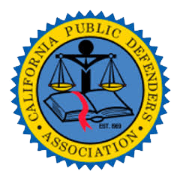California’s Three Strikes Law has been a topic of heated debate since its inception in 1994. The idea of “three strikes and you’re out” might sound simple, but the reality is far more complex. This law was created to keep repeat offenders in prison, but how it’s been used has raised questions about fairness.
When you look closely at this law, you see it’s not just about three chances. There are specific details, exceptions, and ongoing court cases that make this law a complicated subject.
For those affected by it, knowing the specifics can show its wide-ranging effects. Whether it’s for personal knowledge, professional reasons, or needing to know how this could impact someone personally.
Table of Contents:
- The Origins and Evolution of California’s Three Strikes Law
- Understanding the Mechanics of California’s Three Strikes Law
- The Impact on California’s Criminal Justice System
- Controversies and Criticisms
- The Future of California’s Three Strikes Law
- Conclusion
The Origins and Evolution of California’s Three Strikes Law
California’s Three Strikes Law came about during a time when people wanted tougher crime policies. It was driven by public concern and major news stories. The law was approved in 1994, with voters wanting stricter penalties for those who repeatedly broke the law.
However, the law turned out to be different from what many voters expected. The push was to keep dangerous criminals locked up, but the law had a broader effect.
This law affected many repeat offenders.
The Original Law: Casting a Wide Net
Initially, California’s Three Strikes Law was among the toughest in the country. Here’s how it was set up:
- First “strike”: A conviction for a serious or violent felony.
- Second “strike”: Another felony conviction, which didn’t have to be serious or violent, leading to double the usual sentence.
- Third “strike”: Any new felony conviction meant a mandatory 25 years to life sentence.
This setup meant someone could get a life sentence for a smaller crime if they already had two strikes. It didn’t matter if those strikes were from a long time ago.
Even someone who has turned their lives around can still face a lengthy sentence.
Proposition 36: A Game-Changing Reform
In 2012, Proposition 36 was passed, changing the Three Strikes Law significantly. This change was meant to fix some of the very strict parts of the first law.
Key changes were:
- Making sure the third strike was usually a serious or violent felony.
- Letting some people sentenced under the old rules ask for a new sentence.
These changes have made a difference. A study showed that Proposition 36 has helped lower the number of people in prison and save money, without causing more crime.
Understanding the Mechanics of California’s Three Strikes Law
Let’s look at how this law works in real life. It is key to understand its workings, which can be involved.
You might face these charges and wonder how they apply to you or a loved one.
What Counts as a “Strike”?
Not all felonies are the same under this law. A “strike” is usually a serious or violent felony, like:
- Murder or attempted murder.
- Robbery.
- Rape.
- Burglary of a place where someone lives.
- Any felony where a gun is used.
Some crimes you might not think of can be strikes. For example, breaking into a home is seen as a serious felony in California.
Under California Penal Code, certain offenses can lead to a strike.
Sentencing Under the Three Strikes Law
Here is how sentences are given under this law.
Understanding the sentencing provisions is very important.
- First strike: You get the usual sentence for the crime.
- Second strike: The sentence for the new crime is doubled.
- Third strike: If the new crime is serious or violent, the sentence is 25 years to life in prison.
Judges do have some say in these cases. They can decide to look past previous strikes if they think the person doesn’t fit what the Three Strikes Law was meant for.
The Impact on California’s Criminal Justice System
The Three Strikes Law has greatly changed California’s criminal justice world. It’s changed how cases are handled by prosecutors and defense lawyers, and how they’re decided by judges.
Many California law officials must follow this.
Overcrowded Prisons and Ballooning Costs
One of the biggest effects has been on the number of people in prison. The law caused a big jump in inmates serving long sentences, leading to packed prisons and higher costs.
In 1994, California had about 125,000 people in prison. By 2006, that number had gone up to over 170,000.
The Three Strikes Law was a major reason for this increase.
Changes in Plea Bargaining and Trial Rates
The law has also changed how criminal cases are dealt within court. Those who might get a third strike are less likely to agree to plea bargains, meaning more cases go to trial.
This has made things harder for the courts and for public defenders. Facing a potential third strike conviction is no small matter.
A plea bargain might be the only option, if a jury trial seems grim.
Controversies and Criticisms
There are debates around the Three Strikes Law. People argue that it has caused unfair sentences and has affected minority groups more.
Criminal justice officials have had many talks about this.
Disproportionate Sentences
One big issue with the law is that small crimes could lead to life sentences. Before Proposition 36, some people got 25-to-life sentences for things like stealing or having drugs.
Racial Disparities
Studies show the Three Strikes Law has affected African American and Latino communities more. This brings up questions about fairness in the criminal justice system.
Some believe that the Three Strikes Law leads to racially biased outcomes, while others argue the focus should be on the crimes committed.
The Future of California’s Three Strikes Law
The conversation around California’s Three Strikes Law is not finished. How the law will be used and talked about in the future is important.
The law keeps changing because of new laws, court rulings, and what the public thinks.
A San Diego judge recently talked about the impact of these laws.
Potential for Further Reform
People are still talking about changing the Three Strikes Law more. Some want it gone completely, while others suggest smaller changes like:
- Making sure only violent felonies count as “strikes”.
- Having a time when old strikes don’t count anymore.
- Giving judges more freedom in using the law.
These changes could make the law fairer.
There are many views on how to improve the law.
The Role of Criminal Defense
For those charged under the Three Strikes Law, having a good lawyer is very important. Defense attorneys are key in dealing with this complicated law by:
- Questioning if old strikes are valid.
- Asking for strikes to be dropped for fairness.
- Working out deals to avoid a third-strike sentence.
Many law groups that focus on criminal defense offer ways to pay that help with the cost of a lawyer. This can be a big help for people facing tough charges under this law.
Especially with the risk of facing a lengthy prison sentence.
Conclusion
California’s Three Strikes Law is complicated and affects many people. Changes like Proposition 36 have made it less strict, but there are still debates about how fair and useful it is.
This law doesn’t just change sentences. The lasting effects on inmates and communities is still felt.
Keeping up with these issues is key for everyone. Being part of the discussion of California’s Three Strikes Law and can help its evolution.




